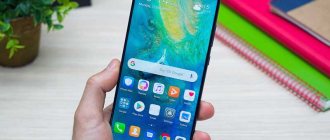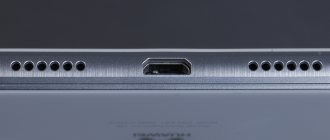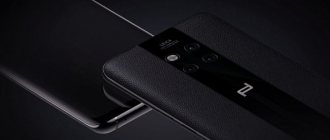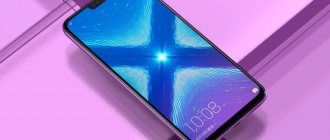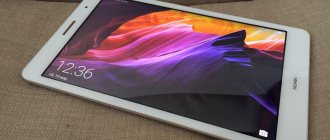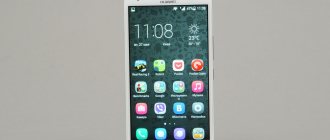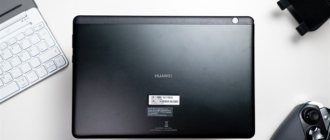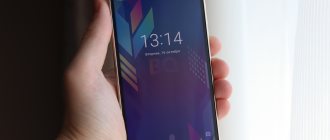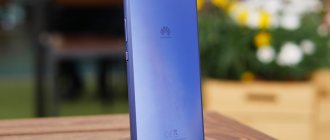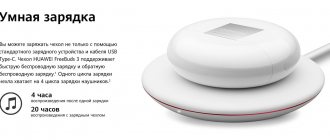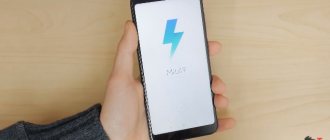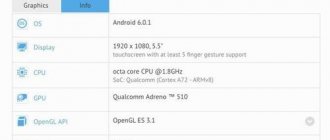Huawei Mate 8 is a stylish smartpad for the business segment. This is indicated by both the technical characteristics and design of this device, as well as the dimensions of its 6-inch screen. This gadget was presented to the general public at CES 2020. It replaced the previous iteration of smartphones. According to the Chinese developers, they did not plan to redesign the appearance of the device. This, rather, can be called a kind of work on bugs and updating the successful Huawei Mate 7.
What the 8th Mate model can please you with, this Huawei Mate 8 review will tell you about it.
Specifications
Before starting a detailed review of the Huawei Mate 8, let's briefly take a look at the technical characteristics of this device:
| Weight | 186 g; |
| Dimensions | 7.9×80.6×157.1 mm; |
| Battery capacity | 4000 mAh, non-removable type; |
| RAM capacity | 3 Gb; |
| Internal memory capacity | 32 Gb; |
| Screen | 6-inch, 368 ppi, 1080×1920; |
| Cameras | main - 16-megapixel (with autofocus and flash), front - 8-megapixel; |
| Sensors | fingerprint scanner, microscope, compass, barometer, proximity and light sensors; |
| Navigation | Glonass, GPS; |
| Wireless interfaces | NFC, bluetooth 4.2, Wi-Fi Direct and 802.11 ac/n/g/b/a; |
| SIM cards | 2 nano-SIM cards; |
| Connection | LTE 1, 3, 7, 20 || UMTS 2100/1900/900/850 MHz || GSM 1900/1800/900/850 MHz; |
| Supported memory cards | micro SDXC up to 128 Gb; |
| Graphics accelerator | Mali-T880 MP4; |
| Chipset | 8-core Huawei Kirin 950, 2.3 GHz; |
| OS | Android 6.0 + EMUI 4.0. |
Huawei Mate 8
Regardless of how the fate of the recently introduced Chinese phablet Huawei Mate 8 , its appearance in the telephone world can already be called a historical event. In the authoritative AnTuTu benchmark, our today's hero received a score exceeding 94,000 points. So, unexpectedly for many, Huawei produced one of the most powerful devices on the market today. In a number of indicators, the gadget has surpassed not only its predecessor Mate 7, but a whole list of flagship models that have already managed to slightly strengthen their commercial position, which includes Meizu Pro 5, Xiaomi Mi Note Pro and Samsung Galaxy Note 5.
External features
Since the appearance of the Huawei Mate 8 remains quite recognizable, this clearly shows that it has not undergone major changes in comparison with earlier models. The device probably cannot be called super stylish, but the presence of an all-metal body made of aluminum alloy and a thickness of 7.9 mm still deserves respect. The device is distinguished from its one year older brother Huawei Mate 7 by the black navigation bar and the location of the rear panel elements: the camera and the fingerprint sensor, which has moved to a slightly protruding area next to the lens. For now, we expect the smartphone to appear in three colors: black, gold and silver.
Sim and screen
Traditionally for Chinese phones, the phablet is equipped with two slots for SIM cards. It is noteworthy that the manufacturers again remembered the Force Touch screen technology, which was previously used in Huawei Mate S and iPhone 6s. Its peculiarity is that the 6-inch screen becomes smarter, or more precisely sensitive, to the force of touch and reacts differently to them. Although Huawei has a reputation as an opponent of a large number of screen pixels, in Huawei Mate 8 we find a departure from tradition - a QuadHD display with a resolution of 1440x2560p.
Secret of success
Huawei Mate 8 reached the top level of several tests largely due to the capabilities of the Kirin 950 chip, with 8 cores and a clock frequency of 2.3 GHz, although not by much, but surpassing the Exynos 7420 and Snapdragon 810 chipsets. The flagship will be available with two RAM options - 3 and 4 GB and 32 and 64 GB of permanent memory, respectively. The ultra-modern Mali-T880 accelerator with a 20.7 megapixel matrix is responsible for the graphics. The front photo module is equipped with an 8 MP camera. Both cameras are equipped with autofocus. The presence of a dedicated Tensilica Hi-Fi 4 audio chip was noticed. The non-removable battery is also good and its capacity has reached almost the maximum value - 4400 mAh.
It is planned to install the latest version of Android OS on the smartphone. The estimated price of the new product is 430 euros.
Equipment
Huawei Mate 8 is sold in a beautiful black cardboard box, the front of which is decorated with the model name printed in gold letters.
Everything in the box is stacked in layers. On top there is a special box for the Huawei Mate 8 itself. Below it there are 3 boxes with accessories. The smartpad is equipped with a bumper that can be used to protect the ends, a set of documents, a clip for removing the nano-SIM tray, a stereo headset, a power adapter with a current of up to 2 A, and a USB cable.
The best fingerprint scanner
One of the best aspects that distinguishes the Huawei Mate 8 smartphone, user reviews note, is the presence of a fingerprint sensor located on the rear panel. This is one of the best implementations on the market: the sensor is always on, blazing fast and rarely makes mistakes. Unlocking and displaying the start screen occurs almost instantly. In addition, the sensor can be configured to take pictures, answer calls, or turn off alarms.
Design
A review of the Huawei Mate 8 smartphone is impossible without a detailed consideration of the device’s design. The device has a truly flagship design: 100% metal body, small-sized, for a 6-inch display. The case is only 7.9 millimeters thick, its matte surface created by sandblasting.
The flat sides of the smartphone have the texture of rolled metal. The edges are decorated with shiny chamfers. Strict headbands look very stylish and noble. The phone is available in brown, black and silver colors. The build quality of the case is almost perfect; it does not deform and does not produce any sounds during various manipulations.
The front of Huawei Mate 8 is covered with 2.5D high-strength protective glass. The display occupies 86% of the front part. The fields below and above are decorated with a subtle pattern in the form of funny circles, which can only be seen from a certain angle and only in extremely bright lighting. On the field below there is a manufacturer's logo, above which there are virtual control keys.
In the center above the smartphone display there is a speaker, to the right of which you can see the front camera lens, as well as light level sensors.
The back cover of Huawei Mate 8 is made of aluminum and is non-removable. It has perfectly fitted plastic inserts of the same color as the body of the device.
At the top center of the back panel you can see the main camera, housed in an aluminum disc with a shiny edge. On the left there is a dual LED flash, under which there is a fingerprint sensor with a shiny bevel.
The right side of the smartphone is equipped with a power button and a volume rocker.
The left side is equipped with a clamp-openable tray for 2 nano-SIM cards.
At the top end of Huawei Mate 8 there is a 3.5 mm audio output and a hole for a microphone.
In the central part of the bottom end there is a micro-USB port, on either side of which a pair of grilles are symmetrically located, under which there are microphones and an audio speaker.
There is also a standard decoration for Huawei smartphones - a pair of star screws.
Huawei's latest phablet may well be even better
And while the Chinese manufacturer Huawei cannot claim widespread fame and brand recognition, it has managed to expand its reputation in the United States and European countries. The manufacturer adheres to an attractive equation: it offers high-end equipment at an affordable price.
The new Huawei Mate 8 is no exception. It offers the leading specs you'd expect from a flagship smartphone, but at a lower price than most of Samsung and Apple's competitors.
Following the Huawei Ascend Mate 7, which impressed that year, the company rolled out an updated phablet that solved most of the problems and shortcomings of the previous iteration. The manufacturer also wisely eliminated the Ascend name, so the new smartphone is simply called Huawei Mate 8.
The new Mate 8 was launched in China late last year, and at CES 2020 Huawei announced that the smartphone would arrive in the US, UK and Russia in early 2020. However, at the time of writing this review, Huawei had not yet confirmed prices for our country. With that in mind, we can't fully summarize this review until we know the prices. Huawei Mate 8 review more...
Huawei Mate 8 smartphone design
The Ascend Mate 7 has excelled in the design department, and the few subtle changes that come with the new Mate 8 make the latest phablet even better. First of all, the new smartphone gets an all-metal design that comes in gold, silver, gray or brown colors. We received a silver Huawei Mate 8 for review.
The phone has a smooth back that feels slippery, but we didn't experience any issues during our review. Surprisingly, considering the dimensions of the device, which measures 157 x 80 x 7.9 mm, this is not a small phone. Huawei fit a 6-inch display into these dimensions, but the bezel was cut off so thoroughly that the smartphone is not much larger than the screen.
We're impressed by how little bezel is left on the new Huawei Mate 8, especially on the sides. There is a thin bezel at the top and bottom of the screen, but it is useful for capturing the smartphone on the back, while on the front, these parts are used to house the camera and speaker.
At the bottom of the smartphone is the speaker grille, which seems to be one of the worst parts of the smartphone. I would prefer to see the grille hidden in the body of the smartphone.
This solution makes the bottom end of the smartphone look like it’s in steampunk style, which is something not everyone wants from their smartphone. The end is also emphasized by exposed screws, which again remind us that the smartphone was assembled at the factory and does not come from the most popular manufacturers.
The camera protrudes slightly from the body of the smartphone, but not as noticeably as on the iPhone 6S, you can only notice it after examining the back panel for a while. Below the camera is a fingerprint scanner, which this time is round (on the Mate 7 it was square) and slightly recessed, like on the Huawei Nexus 6P. The scanner looks cool and generates discussions when other people look at the smartphone.
Having a fingerprint scanner on the back instead of the front or side can cause problems when the smartphone is lying on a table. But it's positioned in a natural place for your finger when you're holding a smartphone—it just might take a while to get used to its placement, especially after using an iPhone or other Android smartphones.
Display
Mate 8 received a 6-inch IPS matrix with FullHD resolution (1080x1920). The pixel density level is 368 pixels per 1 inch. Compared to competitors' devices, in which this figure exceeds 500, Huawei Mate 8 looks rather weak, but it is not the numbers that should be assessed, but the quality of the screen itself. It is impossible to see any jagged or pixelated fonts here without a magnifying glass. This is not the most correct technique in terms of image, but in terms of ease of use everything is excellent.
The capacitive touch surface of Huawei Mate 8 is capable of recognizing 10 simultaneous touches. You can use the device with gloves, although without much convenience, but, in any case, you will be able to accept or reject a call.
The maximum screen brightness is 490 cd/m2, and the lowest brightness is 49 cd/m2. Due to the absence of a special air gap and the presence of a polarizing filter, the user can comfortably use the device even in bright light.
The lowest black field level is 0.33 cd/m2, which is quite good for an LCD screen. The contrast level is also at a decent level - 1310:1. The use of LCD, rather than the more modern AMOLED, has led to the fact that the contrast image quality is more pleasing than the huge resolution, but on a small screen.
The color situation on the Huawei Mate 8 screen is so-so. Gamma reaches a value of 2.11, which is not fatal against the standard of 2.2. But the average DeltaE deviation of 5.37 is not encouraging. This deviation is explained by the fact that the color gamut significantly exceeds sRGB standards.
The color temperature of the Huawei Mate 8 screen is 7500K, which is “colder” than the norm of 6500K. This is not critical, since in the settings you can easily switch color profiles, adjusting them to your liking.
Excellent viewing angles are made in the best traditions of IPS: even with a significant deviation from the perpendicular, color distortion does not occur, and the contrast drops slightly.
Key features of Huawei Mate 8
One of the bright features of the Huawei Mate 8 smartphone is the 6-inch display on the front panel of the smartphone. Huawei again didn't go for 2K or 4K with the new phone. Instead, the manufacturer offers the usual 1080p, which occupy the entire area from edge to edge.
As a result, the 6-inch display only offers 368 pixels per inch, but they look great when you crank up the brightness. I repeatedly turned off the automatic brightness adjustment and turned the brightness to maximum to get a full picture.
Videos look especially stunning on the Huawei Mate 8's screen. The colors are fantastic and I'm very impressed with the quality, considering the display doesn't get the same number of pixels as the LG G4 and Samsung Galaxy S6.
The rear-mounted fingerprint scanner is another one of my favorite features, and it's also one of the best sensors I've used in recent smartphone reviews. Relatively recently, we sang the praises of the Sony Xperia Z5 fingerprint scanner, but Huawei's scanner is just as good, if not better.
The smartphone “comes to its senses” in less than a second. I've seen fingerprint scanners that take longer to identify your finger than if you simply entered a PIN on the screen, but there's no such problem with Huawei.
The Huawei Mate 8 is also one of the few smartphones to offer Android 6.0 Marshmallow out of the box. Most of the smartphones running this software have downloaded Marshmallow as an update, only Nexus range smartphones are running with it.
Unfortunately, you don't get a pure Marshmallow experience with the new Mate 8. And while the Nexus 6P gives you pure Android, the Mate 8 overlays Huawei's Emotion interface on top of it.
Sound
Despite a pair of decorative grilles located on the lower end of the Huawei Mate 8, underneath there is only one speaker, the maximum volume of which is not amazing. The microphone coverage angle is 125°, which is extremely important for hands-free communication.
There is an option for DTS audio enhancement in the headphone settings. The sound quality in the headphones is good. The Music app can play FLAC files.
You can listen to the radio through an FM tuner, for the operation of which you must connect a wired headset that functions as a short-wave antenna. The presence of 3 microphones allows you to record high-quality sound using a voice recorder with a highly effective noise suppression system in the “Interview” and “Meeting” special modes.
Cameras
The main camera of the Huawei Mate 8 uses a 16-megapixel Sony IMX298 sensor, the maximum lens aperture of which is f/2.0. The LED dual photoflash is capable of illuminating the subject in continuous and pulsed modes.
With the vertical orientation of the Huawei Mate 8, on the main screen at the top you can see icons for setting up the flash, going to the menu for switching modes and changing cameras (main/front).
There are 5 links to special shooting modes in a line along the bottom edge:
- "Time period";
- "Video mode";
- "Photo mode";
- "Decoration";
- "Light".
Switching between these modes is carried out by horizontal movement across the surface of the screen. Below the line there are icons for calling up a menu of various special effects filters and going to the gallery, as well as a shutter key.
There are 9 items in the special shooting modes menu:
- "Text recognition";
- "Audio notes";
- "Slowdown";
- "Water marks";
- "Autofocus";
- HDR;
- Pre-mode;
- "Night Shot";
- Panoramic special mode.
Default mode involves a manual option for setting photographic parameters, which are displayed in the form of icons arranged in an arc. Using another similar scale, parameters are selected for making adjustments, which include: white balance, type of focusing, exposure compensation, shutter speed, ISO sensitivity level. If necessary, this scale can be easily collapsed by touching the arrow.
Using the video and photo shooting parameters in the main menu, you can only adjust the frame proportions and resolution. Other points are related to all sorts of auxiliary capabilities for autofocus, the use of on-screen and physical keys.
The Huawei Mate 8 camera can take excellent photos in auto mode in good lighting. You can also get good shots with night photography. In the most difficult conditions, for highly efficient shooting, it is best to use the free mode. In a special mode called “Light”, for high-quality shooting you should use special accessories - a tripod and a clamp.
The main camera is capable of shooting panoramas at high resolution and perfectly coordinates the exposure option for individual frames. But this program is not capable of removing all kinds of rapidly moving objects from the middle and foreground.
In the special “Focus” mode, you can take photographs in a special, original, special format. This is a stack consisting of several photos, which allows you to enable correction of the shooting distance and record images in separate files while working with captured photographic material.
The front camera is equipped with an 8-megapixel sensor and a lens with a strictly fixed photo focus without a flash. Its aperture is f/2.4. It does an excellent job of photographing self-portraits, producing high-quality, clear photographs with competent color rendition in daylight.
Memory and memory card
The smartphone is offered in two versions: with 4 GB of RAM and 64 GB of internal memory and with 3 GB of RAM and 32 GB of internal memory.
We are reviewing Huawei Mate 8 with 32 GB and 3 GB RAM. Of the 32 GB of internal memory, no more than 24 GB are available to the user. It should be recalled that the Mate 7 tested at one time had only 16 Gb. The memory of the Mate 8 can be increased by inserting a 128 GB micro SD/XC/HC memory card instead of the second SIM card (the previous model was limited to 64 GB). In addition, support for special USB-OTG technology makes it possible to connect a flash drive.
Connection
Huawei Mate 8 works with a pair of nano-SIM cards in Dual stand-by mode: these two cards have only one transmitter. Thus, during activity on one SIM card, the second one is deactivated. The smartphone works with SIM cards according to the standard scheme; there are no special features here.
The Huawei Mate 8 smartphone supports NFC, bluetooth 4.2 LE, wi-fi standard 802.11ac in addition to standard n/g/b. There is support for LTE category 6, capable of transmitting data at speeds of more than 300 Mb/s. In our country, there are no problems with LTE; the list contains the necessary bands.
Mate 8 supports navigation systems such as BeiDou (PRC), Glonass, GPS-A, GPS. The phone functions perfectly in navigation mode - it instantly finds satellites. Mate 8 connects to 20 satellites with 6-meter accuracy in 15 seconds. In general, this 6-inch smartphone can be used by car owners as a navigator.
Design and build quality
The design of Huawei Mate 8 is highly rated by customer reviews. The phone has an unrivaled business-class aura with precision machined metal and glass parts, sharper, bolder edges. Available in gold, silver, gray and coffee finishes.
For a 6-inch smartphone, the device is very compact. The phone is 4.2mm shorter than the 5.7-inch Nexus 6P from the same manufacturer, and smaller by a millimeter than the iPhone 6s Plus, which only has a 5.5-inch diagonal display.
The phablet features an aluminum unibody design befitting its flagship status. The back panel features a fine satin finish. True, it is not removable, and there is no access to the battery.
Battery life and performance
This smartpad uses a non-removable battery with a capacity of 4000 mAh. Under extremely intense loads and 75% brightness, the device can last almost the entire day without recharging.
With moderate operation, the smartphone can work for approximately 30 hours, and when activating the energy-saving mode, even more than 2 days.
In addition, a fully charged battery of the smartphone in question allows you to:
Watch videos at maximum brightness for 10 hours;
Play graphically heavy video games (for example, WoT) - 5 hours;
Read e-books at 70% brightness - 14 hours.
The smartphone supports fast charging, which allows you to charge the battery by 70% in 30 minutes.
Together with Mate 8, the debut of the new 8-core HiSilicon Kirin 950 chipset, created according to the 16-nm process technology, by the Taiwanese company TSMC, took place. It has 4 powerful ARM Cortex-A72 cores with a frequency of 2.3 GHz and 4 Cortex-A53 cores with a frequency of 1.8 GHz.
High-quality processing of graphic data is provided by the ARM Mali-T880 MP4 accelerator with 4 execution units with a frequency of 900 MHz.
The Smart i5 coprocessor is responsible for the operation of the fingerprint scanner and other sensors. In addition to the latest ISP designed for image processing, the chipset integrates an LTE modem that supports Cat.6 and a dual-channel LPDDR4/LPDDR3 memory controller.
The performance of the Kirin 950 processor is 100% greater than that of the Kirin 925, which was used in the previous version of the smartphone, energy efficiency is 70%, and the graphics accelerator has become 126% more powerful. Despite this, the latest processor is noticeably inferior to the Qualcomm Snapdragon 820 and Samsung Exons 8890.
Features and Performance
Huawei doesn't skimp on the specifications of the new Mate 8 - you get similar specs to Samsung and Sony flagships. Huawei Mate 8 is powered by the Kirin 950 chipset released by Huawei, including a 2.3GHz quad-core processor mounted on another 1.8GHz quad-core processor.
The performance of the smartphone is the most impressive part of the Huawei Mate 8 review. We didn't experience any lack of power with apps while using the smartphone, and playing games, even graphically intensive ones like Asphalt 8, did not cause artifacts or stuttering, which the Ascend Mate 7 couldn't boast of.
In this version of the smartphone you can get up to 3 GB of RAM. You can also get 4GB of RAM with models with 64GB of internal storage, but for this review we were given the Huawei Mate 8 32GB, which ran on 3GB of RAM.
While we may have been a little disappointed that we didn't get the top spec, the Mate 8 32Gb had no performance issues and there's no reason to ask for more memory. Memory sets only include 32GB and 64GB, so you get a decent amount of storage in both cases, and the range of pre-installed apps takes up virtually no memory on your phone.
Every smartphone comes with MicroSD support up to 128GB, but you'll have to sacrifice a second SIM slot to get the extra space. Huawei Mate 8 comes with the latest Android software, but you wouldn't know it's Android 6.0 Marshmallow just by looking at it.
And while you get all the latest features from Google, you won't see the iconic Material design that Google showed off back in Lollipop. Instead, Huawei imposes its own Emotion UI, which is the worst aspect of the smartphone. Not only that, but the UI doesn't use the app tray, mimicking iOS and scattering your app icons all over your home screen, which can make it difficult to find the app you're looking for.
Add to this problem the fact that the Emotion interface changes app logos, so when you look for a familiar app, you have to look at the text, not the image. Of course, some people really like the way the Emotion interface looks, but I think it's too intrusive.
I just wish Huawei would release a smartphone like this or give the option to run pure software. Take a look at what the Huawei Nexus 6P offers, which combines great design, amazing specs and vanilla Android. I can't help Huawei, but I feel like the Mate 8 would be a lot better this way.
Bottom line
Carrying out a detailed review of the Huawei Mate 8, we can say that it is a truly balanced modern smartphone, fully worthy of its flagship status. The powerful filling does not prevent this device from working autonomously for a long time.
Other advantages of this flagship include a compact and beautiful body, extremely narrow frames around the screen, an excellent camera with an optical stabilization system, and a fast-working fingerprint scanner.
The only drawback of the Huawei Mate 8 is its high cost of $800. The low screen resolution for a flagship smartphone and the lack of a separate slot for a memory card do not seem to be too big drawbacks.
